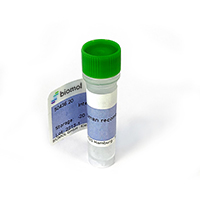Cookie preferences
This website uses cookies, which are necessary for the technical operation of the website and are always set. Other cookies, which increase the comfort when using this website, are used for direct advertising or to facilitate interaction with other websites and social networks, are only set with your consent.
Configuration
Technically required
These cookies are necessary for the basic functions of the shop.
"Allow all cookies" cookie
"Decline all cookies" cookie
CSRF token
Cookie preferences
Currency change
Customer-specific caching
FACT-Finder tracking
Individual prices
Selected shop
Session
Comfort functions
These cookies are used to make the shopping experience even more appealing, for example for the recognition of the visitor.
Note
Show the facebook fanpage in the right blod sidebar
Statistics & Tracking
Affiliate program
Conversion and usertracking via Google Tag Manager
Track device being used

| Item number | Size | Datasheet | Manual | SDS | Delivery time | Quantity | Price |
|---|---|---|---|---|---|---|---|
| ABE-32-8631-10 | 10 µg | - | - |
3 - 11 business days* |
546.00€
|
||
| ABE-32-8631-50 | 50 µg | - | - |
3 - 11 business days* |
979.00€
|
If you have any questions, please use our Contact Form.
You can also order by e-mail: info@biomol.com
Larger quantity required? Request bulk
You can also order by e-mail: info@biomol.com
Larger quantity required? Request bulk
Source: E.coli. MW :22.4kD. Recombinant Human Receptor Activator of NF-kappa-B ligand is produced... more
Product information "Recombinant Human RANK L/TRANCE/TNFSF11 (N-6His)"
Source: E.coli. MW :22.4kD. Recombinant Human Receptor Activator of NF-kappa-B ligand is produced by our E.coli expression system and the target gene encoding Ile140-Asp317 is expressed with a 6His tag at the N-terminus. CD254, also known as RANKL, TNFSF11, TRANCE, OPGL and ODF, is a type II membrane protein of the tumor necrosis factor (TNF) superfamily, and affects the immune system and control bone regeneration and remodeling. RANKL is the ligand of nuclear factor (NF)-kB (RANK). When RANKL binds to RANK, it will undergo trimerization and then bind to an adaptor molecule TNF receptor-associated factor 6 (TRAF6). This results in the activation of several downstream signaling cascades, including the NFkB, mitogen-activated protein kinases (MAPK), activating protein 1 (AP-1), and nuclear factor of activated T cells (NFATc1), resulting in the formation of multinucleated bone-resorbing osteoclasts. RANKL is widely expressed in skeletal muscle, thymus, liver, colon, small intestine, adrenal gland, osteoblast, mammary gland epithelial cells, prostate and pancreas. Protein function: Cytokine that binds to TNFRSF11B/OPG and to TNFRSF11A/RANK. Osteoclast differentiation and activation factor. Augments the ability of dendritic cells to stimulate naive T-cell proliferation. May be an important regulator of interactions between T-cells and dendritic cells and may play a role in the regulation of the T-cell-dependent immune response. May also play an important role in enhanced bone-resorption in humoral hypercalcemia of malignancy (PubMed:22664871). Induces osteoclastogenesis by activating multiple signaling pathways in osteoclast precursor cells, chief among which is induction of long lasting oscillations in the intracellular concentration of Ca (2+) resulting in the activation of NFATC1, which translocates to the nucleus and induces osteoclast-specific gene transcription to allow differentiation of osteoclasts. During osteoclast differentiation, in a TMEM64 and ATP2A2-dependent manner induces activation of CREB1 and mitochondrial ROS generation necessary for proper osteoclast generation. [The UniProt Consortium]
| Supplier: | Abeomics |
| Supplier-Nr: | 32-8631 |
Properties
| Conjugate: | No |
Database Information
| KEGG ID : | K05473 | Matching products |
| UniProt ID : | O14788 | Matching products |
| Gene ID | GeneID 8600 | Matching products |
Handling & Safety
| Storage: | +20°C |
| Shipping: | +20°C (International: +20°C) |
Caution
Our products are for laboratory research use only: Not for administration to humans!
Our products are for laboratory research use only: Not for administration to humans!
Information about the product reference will follow.
more
You will get a certificate here
Viewed



